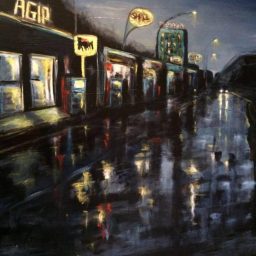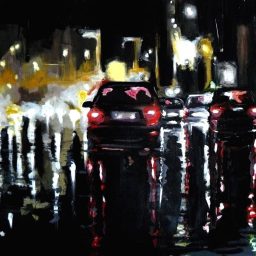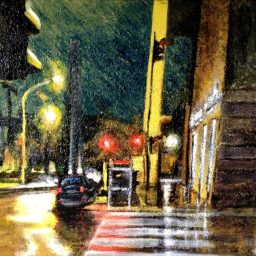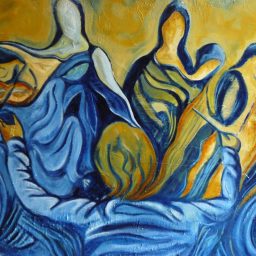Maurizio Yorck was born in Pozzuoli (NA) in March 1968, he lives and works in Rome. Self-taught began a cognitive path of painting in 1992, through the study of the great impressionist masters, attracted by their ability to represent light in all its forms. For years he tries to take those emotions and make them his own.
EROS & THANATOS - In December 2007, decided to find his own identity that allows him to communicate the perceived emotions of everyday life, creates a series of works that he proposes in his first personal exhibition: "The red, the black ... and other stories" . The works, modern and deliberately flat, are represented in "four-color" (white, yellow, red, black) exalting on the one hand the exasperation of light and on the other the emotionality experienced daily. Thus, the Eros and Thanatos vein comes to life, where the woman becomes the protagonist, and the colors represent the moment (eros-rosso, thanatos-nero). The artist tries to represent women as she would like to see them always, elegant, casual, daring, goliardic ready to play on par with man, but, in their attitude there is always something that makes them in his eyes, fragile , blocked, unable to act as they would like, blocked by the perennial expectation of something or someone who is not there.
URBAN LANDSCAPES - At the beginning of 2008, creativity follows new paths, and leads the artist to produce his first work "URBAN", which highlights a profound change in gender. "VERSO CASA" wins the FIRST PRIZE of the national competition, "PERLA DEL TIRRENO", organized by the PUBLIC ACADEMY OF MUSE in VIAREGGIO, which involves more than 60 artists from all over Italy and more than 100 works are exhibited. The Maestro Franco Adami rewarded the work. This is how the "Metropolitan scenarios - the beauty under our eyes" was born, later renamed in New York URBAN LANDSCAPES beauty around us. This second path brings out scenes of everyday life, often stolen from the car, at dusk, at night, on the paths that lead from work to home. The artist tries to capture the lights, the shadows, the reflections, but above all the atmospheres, the attitudes of the unconsciously recovered people. Scenes experienced in general with exasperation or in "hypnosis" as repeated every day. In those moments you lose the perception of reality, and the ability to steal the beautiful under our eyes. For the artistic look instead, the windshield becomes a frame, what you see from the cockpit is transformed into vision, sometimes dreamlike, other blinding light contortions, the road ignites, moves on the canvas. "It is possible to get excited, even when standing still at the traffic light". The "URBAN" collection still produces in 2009 the publication of the work "Pioggia sulla Colombo" on the catalog "BERLIN CELESTE PRIZE 2009", In 2011 in May the FIRST "TOWN" PRIZE held by the Galleria Coronari111 in Rome, and a "Mention of 'honor' at the Amalfi Prize 2011 organized by the Beppe Palomba Academy of Bussola.
STABAT MATER - It is a project by the conductor M ° Antonio Puccio, who invites the artist to represent the work STABAT MATER for IMAGING MUSIC, to narrate it through images, and to transform the emotions experienced during the concert held in the DUOMO from ORVIETO. The work created is included in the DVD created for the occasion as a promo event for the event. Later it is exhibited and becomes the cover of the concert held at the AUDITORIUM OF THE CONSILIAZIONE in ROMA during the representation of the STABAT MATER of PERGOLESI directed always by the M ° Antonio Puccio with the ARCO MAGICO CHAMBER ORCHESTRA.






